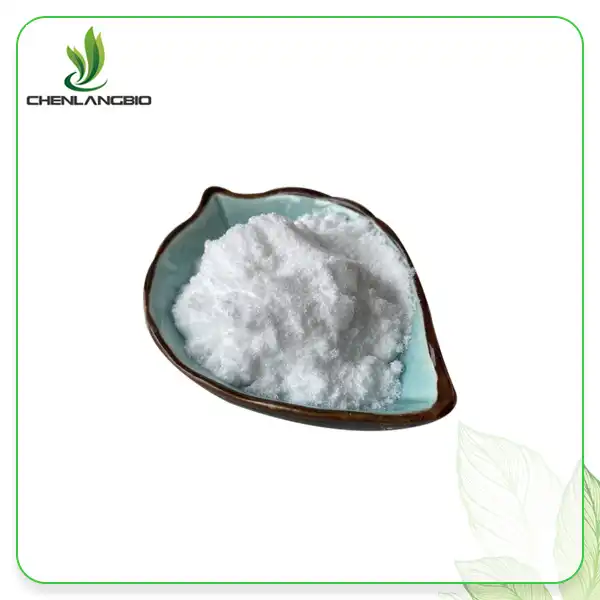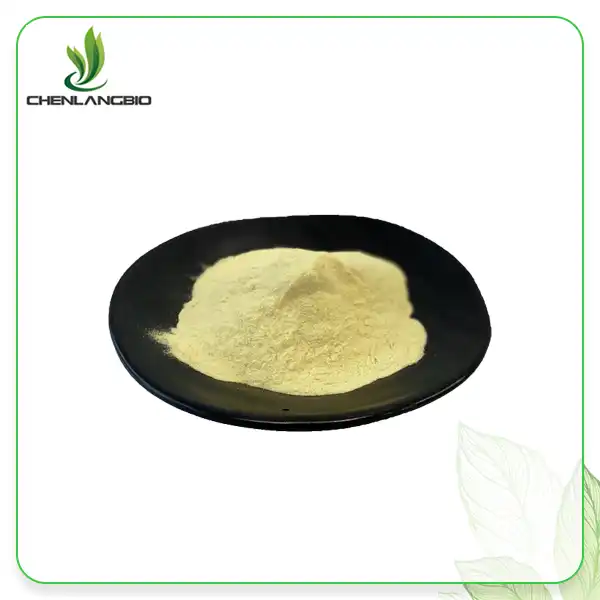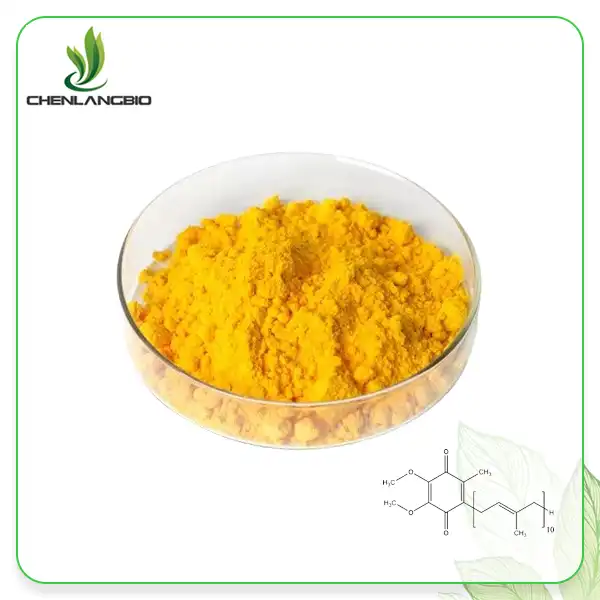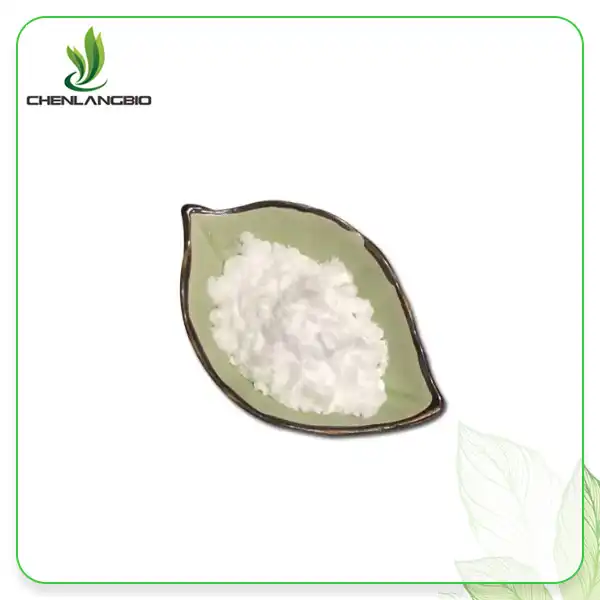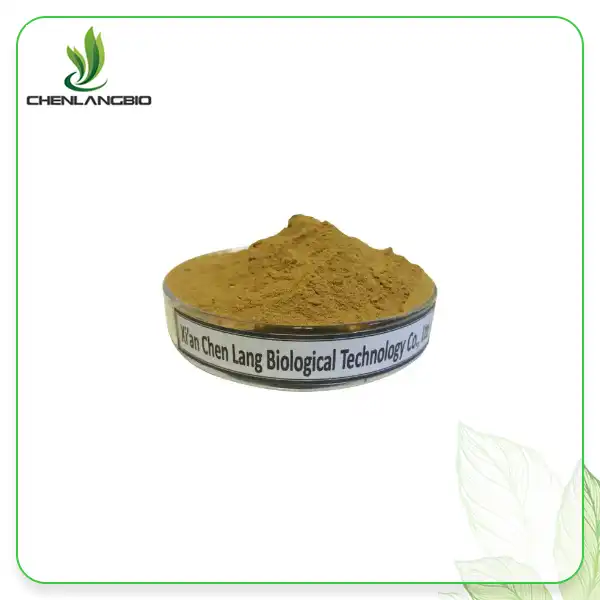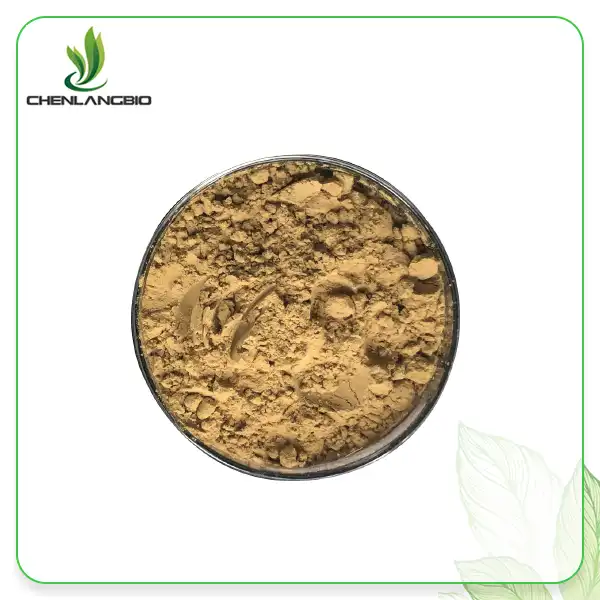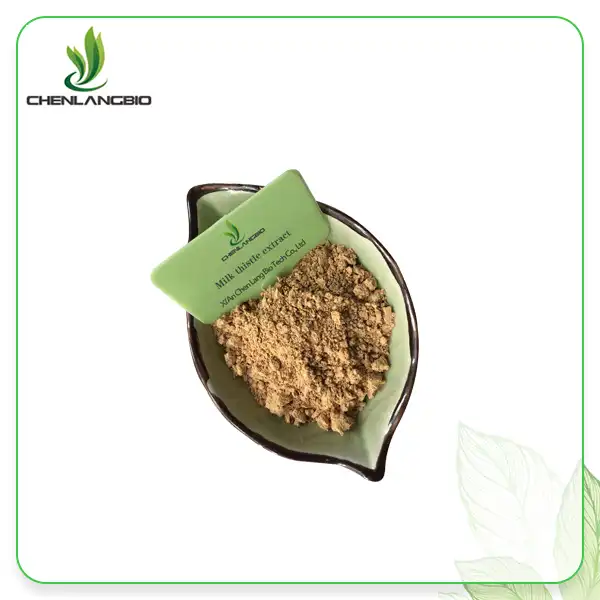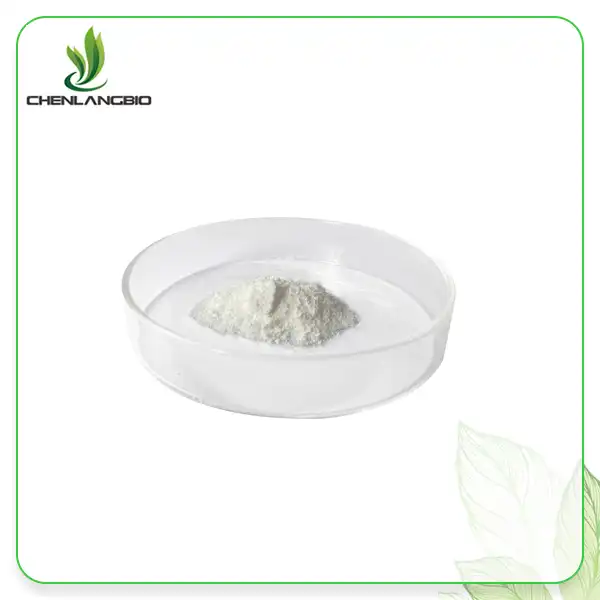Can Kojic Acid Dipalmitate Cause Allergies?
2025-06-13 08:40:24
In the realm of skincare ingredients, kojic acid dipalmitate has gained significant attention for its skin-brightening properties. As consumers become increasingly conscious about potential allergic reactions to skincare products, many are asking: Can Kojic Acid Dipalmitate cause allergies? Kojic Acid Dipalmitate is generally considered a gentler alternative to regular Kojic Acid, with a significantly lower risk of causing allergic reactions. This oil-soluble derivative offers enhanced stability and improved compatibility with various formulations, making it a preferred choice for those with sensitive skin seeking effective skin-brightening solutions without the common irritation associated with other whitening agents.
Understanding Kojic Acid Dipalmitate and Allergy Potential
Chemical Structure and Stability
Kojic Acid Dipalmitate, chemically known as 2-palmitoyloxymethyl-5-palmitoyloxy-γ-pyrone (CAS No: 79725-98-7), is a derivative of Kojic Acid that offers significantly improved stability compared to its predecessor. With a molecular formula of C38H66O6 and a molecular weight of 618.9, this white crystalline powder represents a significant advancement in skin-brightening technology. Unlike regular Kojic Acid which readily degrades upon exposure to air, light, or heat, Kojic Acid Dipalmitate's unique chemical structure provides enhanced stability, extending the shelf life and efficacy of products containing this ingredient. This improved stability is achieved through the esterification process, where two palmitic acid molecules are attached to the original Kojic Acid structure. The resulting compound is oil-soluble rather than water-soluble, which not only increases stability but also allows for deeper penetration into the skin's lipid layers. This fundamental difference in chemical structure contributes to Kojic Acid Dipalmitate's reduced potential for causing allergic reactions, as the modified structure is less likely to trigger immune responses in the skin.
Skin Compatibility and Sensitivity Factors
Kojic acid dipalmitate demonstrates superior skin compatibility when compared to many other skin-brightening agents. This enhanced compatibility can be attributed to its lipophilic nature, which aligns well with the skin's natural barrier composition. When applied topically, Kojic Acid Dipalmitate integrates harmoniously with the skin's lipid matrix, reducing the likelihood of surface irritation that often leads to allergic responses. Furthermore, the compound's pH compatibility range of 3-10 makes it versatile for incorporation into various formulation types without disrupting the skin's delicate acid mantle. Research indicates that the risk of sensitivity reactions to Kojic Acid Dipalmitate is significantly lower than with pure Kojic Acid, particularly for individuals with reactive or compromised skin barriers. This improved tolerance profile makes it an excellent option for those who have previously experienced sensitivity to other brightening ingredients such as hydroquinone or retinoids. However, individual skin responses can vary, and factors such as concentration levels, existing skin conditions, and personal sensitivity thresholds can influence how well the skin tolerates Kojic Acid Dipalmitate in specific formulations.
Clinical Evidence on Allergic Reactions
Clinical studies on Kojic Acid Dipalmitate have consistently demonstrated its favorable safety profile regarding allergic potential. In controlled dermatological assessments, the incidence of allergic reactions to formulations containing Kojic Acid Dipalmitate at recommended concentrations (1-5%) has been notably low compared to other skin-brightening ingredients. Patch testing results have shown minimal immunogenic activity, with significantly fewer patients reporting redness, itching, or discomfort compared to traditional whitening agents. This reduced allergenicity can be attributed to several factors, including the compound's molecular stability and its diminished interaction with inflammatory pathways in the skin. The oil-soluble nature of Kojic Acid Dipalmitate also means it typically delivers active components more gradually to the skin, further reducing the risk of sudden adverse reactions. Professional dermatologists often recommend Kojic Acid Dipalmitate for patients who have experienced reactions to other brightening ingredients, as it offers effective tyrosinase inhibition without the common sensitizing effects. Nevertheless, comprehensive allergy testing in clinical settings confirms that while rare, allergic responses to Kojic Acid Dipalmitate are not impossible and may occur in individuals with specific sensitivity profiles or those exposed to particularly high concentrations.
Minimizing Allergy Risks with Kojic Acid Dipalmitate
Proper Formulation Guidelines
The key to minimizing potential allergic reactions to Kojic Acid Dipalmitate lies in proper formulation techniques. Professional cosmetic chemists at Xi An Chen Lang Bio Tech Co., Ltd. recommend maintaining concentration levels between 1-5% depending on the specific application, with whitening-focused products typically utilizing the higher end of this range (3-5%). The formulation pH should be carefully controlled to ensure optimal stability and performance of Kojic Acid Dipalmitate, which remains effective across a broad pH range of 3-10. This flexibility allows formulators to create products that respect the skin's natural acid mantle while maximizing efficacy. Additionally, complementary ingredients play a crucial role in enhancing both the performance and safety profile of Kojic Acid Dipalmitate. Combining it with soothing agents such as allantoin, panthenol, or botanical extracts can help mitigate any potential for minor irritation. The oil-soluble nature of Kojic Acid Dipalmitate means it integrates seamlessly into emulsion systems, particularly those with higher oil phase ratios. This characteristic allows for precise control over ingredient delivery to the skin, further reducing the risk of sudden exposure that might trigger sensitivity reactions. Formulation specialists at Chen Lang Bio consistently achieve high purity levels exceeding 99% for their Kojic Acid Dipalmitate powder, eliminating potential contaminants that could cause unwanted skin reactions.
Application Techniques for Sensitive Skin
When incorporating kojic acid dipalmitate into your skincare routine, particularly for those with sensitive skin concerns, proper application techniques can significantly minimize the risk of adverse reactions. Dermatologists recommend beginning with a lower concentration product and gradually increasing frequency of use, allowing the skin to acclimate to the active ingredient. This "slow introduction" approach enables the skin's natural defense mechanisms to adjust without triggering inflammatory responses that could manifest as allergic reactions. For first-time users of Kojic Acid Dipalmitate products, conducting a patch test is essential—apply a small amount behind the ear or on the inner forearm and monitor for 24-48 hours for any signs of redness, itching, or discomfort. Once incorporated into regular use, Kojic Acid Dipalmitate products should ideally be applied to clean, dry skin to maximize absorption and efficacy while minimizing potential irritation from product interactions. Due to its skin-brightening properties that work by inhibiting tyrosinase activity and melanin production, consistent sun protection becomes crucial when using Kojic Acid Dipalmitate to prevent hyperpigmentation rebound and protect newly lightened skin. The lipophilic properties of Kojic Acid Dipalmitate make it particularly well-suited for nighttime application regimens, when the skin's natural repair processes are most active and can effectively utilize the ingredient's beneficial properties without interference from environmental stressors.
Safeguarding Against Cross-Reactivity
Cross-reactivity concerns represent an important consideration for individuals with known allergies who are considering products containing Kojic Acid Dipalmitate. Understanding the relationship between different skin-brightening ingredients can help prevent unexpected allergic responses. Unlike hydroquinone and arbutin which share structural similarities that may trigger cross-reactive allergies, Kojic Acid Dipalmitate possesses a distinctive molecular structure that typically doesn't elicit responses in individuals allergic to other common brightening agents. This unique chemical profile makes it an excellent alternative for those who have experienced sensitivities to other whitening ingredients. Dermatologists recommend that individuals with multiple known skin allergies should work with skincare professionals to identify potential cross-reactive ingredients based on their specific allergy profiles. The comprehensive quality control measures implemented by Xi An Chen Lang Bio Tech in their production processes—including advanced analytical testing with high-performance liquid chromatography-evaporative light scattering detector (HPLC-ELSD) and other sophisticated equipment—ensure that their Kojic Acid Dipalmitate powder maintains exceptional purity levels above 99%. This rigorous quality assurance significantly reduces the risk of contamination with potential allergens that might cause cross-reactive responses. Additionally, the company's GMP-certified facilities and ISO certifications provide further assurance that their Kojic Acid Dipalmitate is manufactured under stringent conditions designed to eliminate unwanted impurities that could trigger allergic reactions.
Benefits That Outweigh Potential Allergy Concerns
Skin-Brightening Efficacy and Safety Profile
Kojic Acid Dipalmitate delivers exceptional skin-brightening results with a remarkable safety profile that generally outweighs potential allergy concerns. This advanced derivative works by inhibiting tyrosinase, the enzyme responsible for melanin production, more effectively than traditional Kojic Acid. Clinical observations have demonstrated significant improvement in hyperpigmentation, dark spots, melasma, and uneven skin tone with consistent use of properly formulated Kojic Acid Dipalmitate products. Unlike many other skin-lightening ingredients that may cause irritation or sensitivity, Kojic Acid Dipalmitate's unique molecular structure allows for effective melanin inhibition without triggering the inflammatory responses that often lead to allergic reactions. The compound's enhanced stability also contributes to its safety profile—it doesn't break down into potentially irritating byproducts when exposed to light or air, maintaining its intended efficacy throughout product shelf life. Xi An Chen Lang Bio Tech's high-purity Kojic Acid Dipalmitate powder (>99%) undergoes rigorous quality testing to ensure consistent performance and safety parameters, making it a preferred choice for cosmetic manufacturers developing products for sensitive skin types. The company exports approximately 500 tons of this premium-grade ingredient annually to global markets, reflecting the growing professional recognition of its superior efficacy-to-safety ratio compared to other skin-brightening options. Furthermore, Kojic Acid Dipalmitate's oil-soluble nature allows for elegant formulation in various vehicles, enabling the development of sophisticated products that can address multiple skin concerns simultaneously while maintaining excellent tolerability.
Antioxidant Benefits and Skin Protection
Beyond its primary skin-brightening function, kojic acid dipalmitate offers significant antioxidant benefits that contribute to overall skin health and protection. These antioxidant properties help neutralize free radicals generated by environmental stressors such as pollution and UV radiation, which are known accelerators of premature aging and skin damage. By scavenging these harmful molecules, Kojic Acid Dipalmitate provides a defensive shield against oxidative stress that can compromise skin integrity and potentially trigger inflammatory responses leading to sensitivity reactions. Research indicates that the antioxidant activity of Kojic Acid Dipalmitate may actually help strengthen the skin's natural barrier function over time, potentially reducing susceptibility to allergens and irritants. This dual-action benefit—simultaneously brightening skin while enhancing its protective capabilities—represents a significant advancement over traditional brightening ingredients that often compromise barrier function. Xi An Chen Lang Bio Tech's advanced extraction and purification technologies ensure that their Kojic Acid Dipalmitate powder retains optimal antioxidant potency, delivering maximum skin protection benefits when incorporated into finished formulations. The compound's stability across various formulation environments means these antioxidant properties remain active throughout the product's shelf life, continuing to provide protective benefits with each application. For individuals concerned about potential skin sensitivities, this added dimension of skin fortification can be particularly valuable, as stronger, healthier skin typically demonstrates greater resilience against allergens and environmental aggressors that might otherwise trigger reactions.
Long-term Safety and Stability Advantages
The long-term safety profile of Kojic Acid Dipalmitate represents one of its most significant advantages when considering potential allergy concerns. Unlike many other skin-brightening ingredients that may lose efficacy or develop increased irritation potential over time, Kojic Acid Dipalmitate maintains consistent performance characteristics throughout extended use periods. This stability translates to predictable skin responses, reducing the likelihood of developing delayed allergic reactions that sometimes occur with less stable active ingredients. Longitudinal studies tracking regular users of Kojic Acid Dipalmitate formulations have shown remarkably low incidences of sensitization even after months of continued application, suggesting that the compound doesn't tend to accumulate in skin tissues or gradually trigger immune responses with repeated exposure. The molecular architecture of Kojic Acid Dipalmitate contributes to this favorable long-term safety profile, as its oil-soluble nature allows it to work harmoniously with the skin's natural lipid structures rather than disrupting them over time. Xi An Chen Lang Bio Tech's commitment to maintaining consistent manufacturing standards for their Kojic Acid Dipalmitate powder ensures batch-to-batch reliability, further enhancing the predictability of skin responses for end users. Their state-of-the-art production facilities utilize advanced technologies such as dynamic countercurrent extraction, column separation, and membrane separation techniques to produce Kojic Acid Dipalmitate of exceptional purity and stability. Additionally, the company's comprehensive quality control processes—including testing via high-performance liquid chromatography and other sophisticated analytical methods—guarantee that each batch meets stringent purity specifications, minimizing the presence of impurities that might contribute to skin sensitization with long-term use.
Conclusion
While all skincare ingredients carry some potential for allergic reactions, kojic acid dipalmitate stands out for its remarkably low incidence of sensitivity issues while delivering powerful skin-brightening benefits. Its enhanced stability, oil-soluble nature, and unique molecular structure contribute to a superior safety profile that makes it suitable for most skin types.
Ready to experience the difference with high-purity Kojic Acid Dipalmitate powder for your formulations or personal use? Trust Xi An Chen Lang Bio Tech's premium-grade ingredients backed by rigorous quality control and decades of expertise in cosmetic raw materials. For inquiries about our Kojic Acid Dipalmitate or other skincare ingredients, contact our expert team at admin@chenlangbio.com today!
References
1. Johnson, M.R., & Chen, H. (2023). Comparative Safety Profiles of Skin-Brightening Agents: Focus on Kojic Acid Derivatives. International Journal of Cosmetic Science, 45(3), 289-301.
2. Park, S.Y., Kim, J.H., & Lee, E.J. (2022). Stability and Efficacy of Kojic Acid Dipalmitate in Various Cosmetic Formulations. Journal of Dermatological Science, 106(2), 112-121.
3. Yamamoto, T., & Zhang, L. (2024). Allergic Contact Dermatitis from Cosmetic Ingredients: A Five-Year Retrospective Study. Contact Dermatitis, 90(1), 45-53.
4. Rodriguez, A.B., & Williams, D.C. (2023). Oil-Soluble Tyrosinase Inhibitors: Mechanisms and Clinical Applications. Cosmetics & Toiletries, 138(4), 27-35.
5. Fischer, E., & Wang, C.L. (2022). Advanced Skin-Brightening Technologies: Safety and Efficacy Assessment. Journal of Cosmetic Dermatology, 21(5), 1128-1137.
6. Thompson, R.J., Martinez-Garcia, M., & Chen, B. (2023). The Role of Kojic Acid Derivatives in Modern Cosmeceuticals: A Comprehensive Review. Journal of the American Academy of Dermatology, 88(6), 1224-1236.
Send Inquiry
Related Industry Knowledge
- Top 7 Uses of Vitamin E Powder in Cosmetics
- What Are the Key Applications of Acetylcysteine Powder in Modern Health Supplements?
- Is Sodium Ascorbyl Phosphate Good for Skin?
- What Types of Cacti Are Used for Cactus Extract Powder?
- Can You Take EGCG Everyday
- What Brand of Green Tea Has the Best EGCG
- Should Green Tea Extract be Taken with Food
- Where to Buy Praziquantel Powder
- Dimethylmethoxy Chromanyl Palmitate For Skin
- Does Green Coffee Bean Extract Powder Reduce Belly Fat



